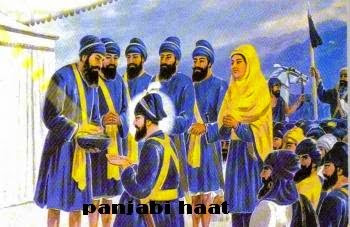Historical Overview of Punjab
Major Events In Punjabi History:
- Aryan Migrations (516 BC -- 321 AD)
- Persian Rule (516 BC -- 321 AD)
- Alexander's Invasion (321 AD)
- Muslim Invasions (713 AD -- 1300 AD)
- The Rise of Sikh Power (1700 AD -- 1849 AD)
The word "Punjab" for the first time was mentioned in the Book ``Tarikh-e-Sher Shah'' (1580) which mentions the construction of Fort by a fellow named ``Sher Khan of Punjab''. Again the name is mentioned in ``Ain-e-Akbari'' part 1 written by Abul Fazal who also mentions that the territory of Punjab was divided into two provinces of Lahore and Multan. Similarly in the second volume of ``Aeen-e-Akbari'' title of a chapter contains the word ``Punjab'' in it. Also the Mughal King Jahangir mentions the word ``Punjab'' on page 183 of his book "Tuzk-i-Janhageeri". [Quraishee 73]
Indus Valley Civilization
Civilizations
But Archeologists have traced the signs of human habitation to times long before that of Mughals arrival. The upper basin of Indus and the Baluchistan Plateau hosted one of the earliest human civilizations known as the Indus valley civilization. The earliest signs of life human activity date as far back as 7000 B.P. The Indus valley civilization grew from small village and settlements to highly refined urban life. At its height, around 3000 B.C., it boasted the splendid cities of Harrapa (Near present Day Sahiwal in West Punjab) and Mohenjo Daro in the lower Indus valley. The story of the decline, whose reasons are still not completely explained, of civilization is also told through the remains of these cities.
Aryan Migrations:
Among other reasons like the change in the weather patterns, urbanization without any rural agricultural production base one factor is reported to be the series of raids or small scale migrations by the Aryans from the North-West (1500-100 BC). The next thousand year history of Punjab (or Arya-Varta, the land of Aryas, as Aryas called it) is dominated by the Aryans and their interactions with the natives of the Indus basin. Here is where the oldest books of human history called the Rig-Vedas are supposed to have been written. The Aryan tongue Sanskrit became a symbol of the Aryan domination of the area.
Easternmost Satrapy of the Persians:
Punjab lied at the outskirts of the great Persian empires and came under their control from time to time. The Persian King Darius the great is reported to have attacked Punjab and occupied some parts. But for the first time the occupation of Punjab was completed by the Persian King Gustasp in 516 BC. Punjab became the wealthiest Satrapy i.e., the province in the Persian kingdom.
Greeks, the rival empire of the Persians, also had some knowledge of the area. The great Persian Emperor Darius I (521-486 BC) appointed Skylax the Greek to explore the area around Indus river for commercial expeditions who provided an account of his voyage in his book ``Peripulus''. Hectaeus (500 BC) and Herodotus (483-431 BC) also wrote about the ``Indian Satrapy'' of the Persians. Alexander's expeditions were documented in the works of Strabo, Ptolemy, Pliny, Arrian and others. They described a region that had plenty of mighty rivers and was divided into four Kingdoms. In Greek maps we find the mention of the mightiest of river of all the world called the Indos (Indus) and its tributaries of Hydaspes (Jehlum), Akesines (Chenab), Hydroatis (Ravi), Hyphasis (Satluj) and Hesidros (Beas).
to be continued...


















